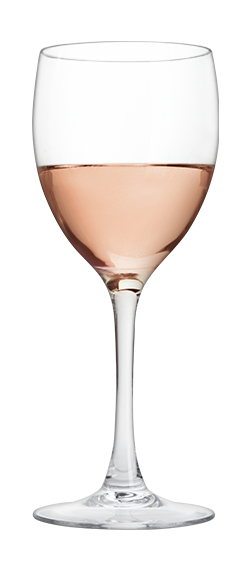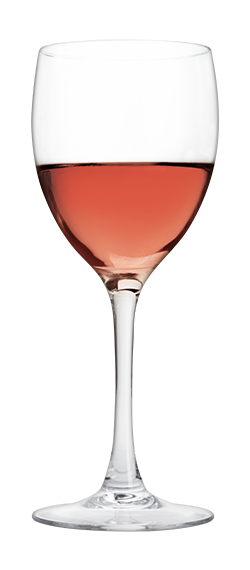Where does rosé wine get its colour?
Rosé wine is made from red grapes (in rare cases it’s made from a blend of red and white) and its colour is derived from grape skins. Following a short maceration period, the grapes are immediately pressed, similar to how white wines are made. The partial extraction of colour from the grape skins is what gives the wine its pinky shade, whereas red wines are a result of the grapes undergoing extended maceration.
What makes a rosé lighter or darker?
A rosé’s hue is influenced by the grape varieties used to make it (for example, Pinot Noir and Cinsault have less pigmentation than Cabernet or Syrah), the maturity of the grapes (the riper they are, the redder they are), and at what point during the vinification process they are pressed. Very pale rosés are in high demand, therefore the majority of winemakers press grapes very early on to minimize the possibility of deeply coloured wine. Keep in mind that a rosé’s colour does not necessarily indicate how sweet it is; a dark rosé can be just as dry and refreshing as a paler one… it really is just a question of preference.
 Provençal rosé
Provençal rosé
(Grenache, Cinsault, Mourvèdre, etc.)
Colour: very pale, light candy pink, clear
Aromas: apple, melon, berries, a touch of spice
 Bordeaux rosé
Bordeaux rosé
(Cabernet, Merlot, Malbec…)
Colour: deeper shade, peony pink
Aromas: black and red fruit, floral notes
 Tip
Tip
Place your wine glass against a white backdrop to better observe the colour (a white sheet of paper does the trick).
Can rosés be aged?
We tend to drink rosé in the springtime, following its harvest. However, like all wines, the best vintages can benefit from a few years of cellaring before being opened and enjoyed all year round. A rosé will change slightly in colour with age, and take on a somewhat pale orange shade, just as red wine can. This colour shift is caused by the oxidation process.
Did you know?
There are three main methods of making rosé wine: direct pressing (the grapes are loaded into the press and pressed immediately); bleeding (some of the juice is removed from a red wine tank early during the maceration process; this concentrates the red wine’s flavours and produces a rosé at the same time); and maceration (the grapes are crushed and the juice is left in contact with the skins for a few hours, and in some cases for up to two days, before being pressed. This method produces rosés that are darker and more aromatic).
 Access to SAQ Inspire personalized services and store inventories are unavailable at the moment.
Access to SAQ Inspire personalized services and store inventories are unavailable at the moment. Free in-store delivery with purchases of $75+ in an estimated 3 to 5 business days.
Free in-store delivery with purchases of $75+ in an estimated 3 to 5 business days. 










